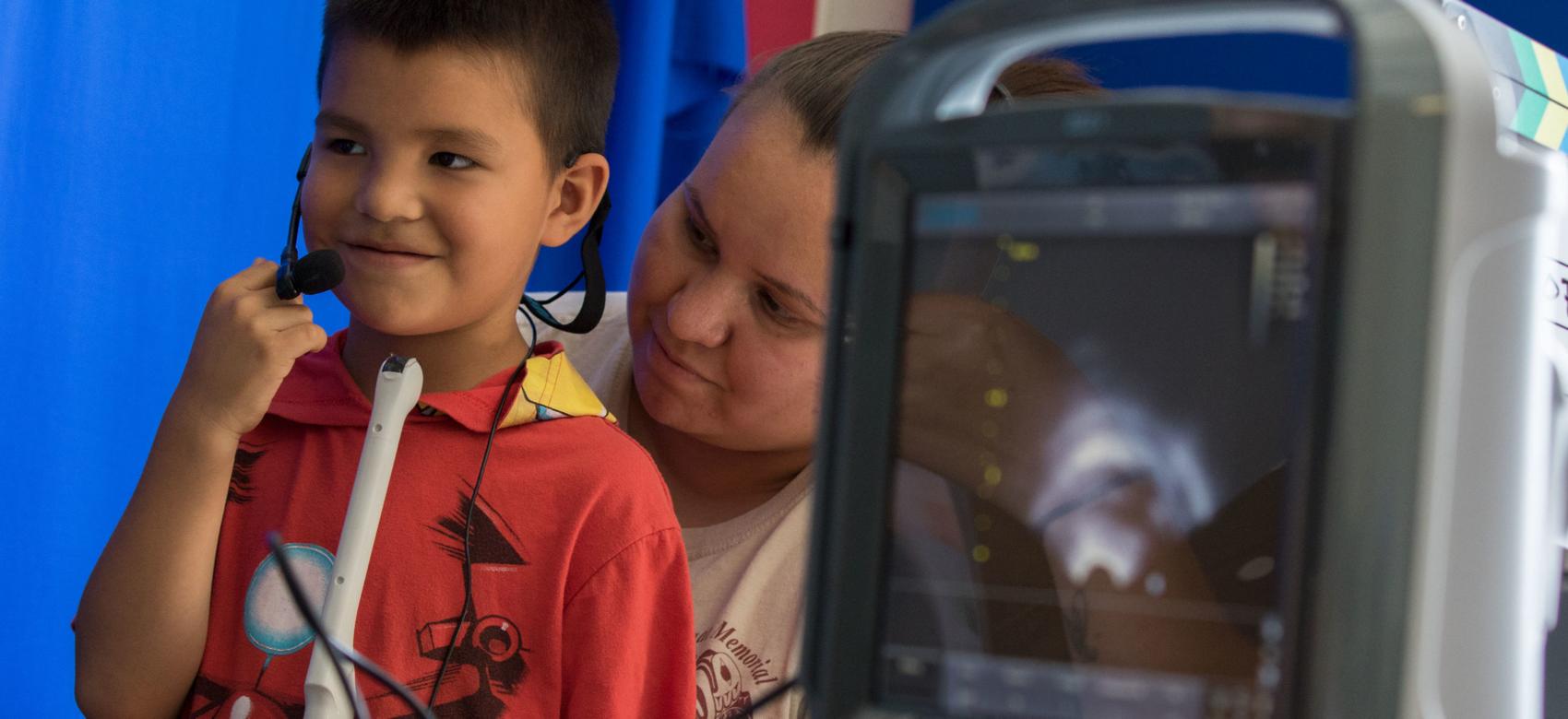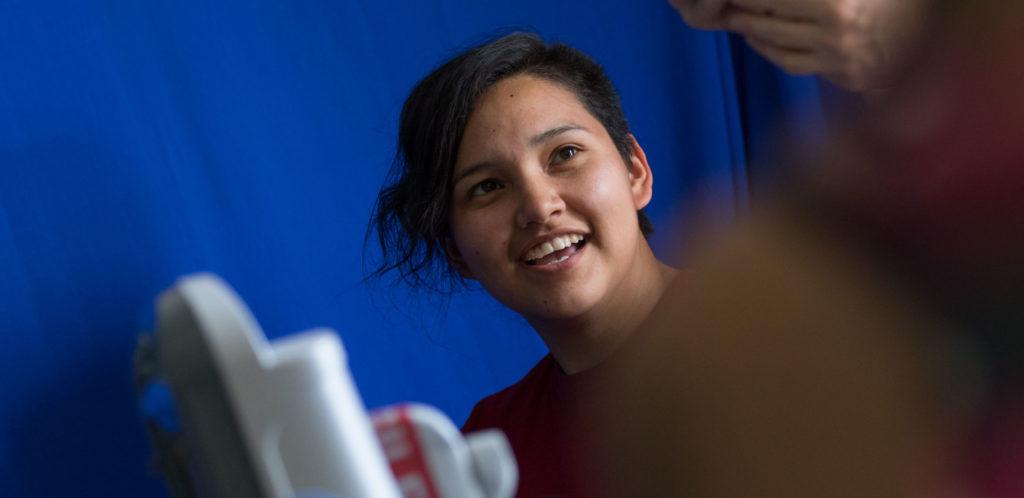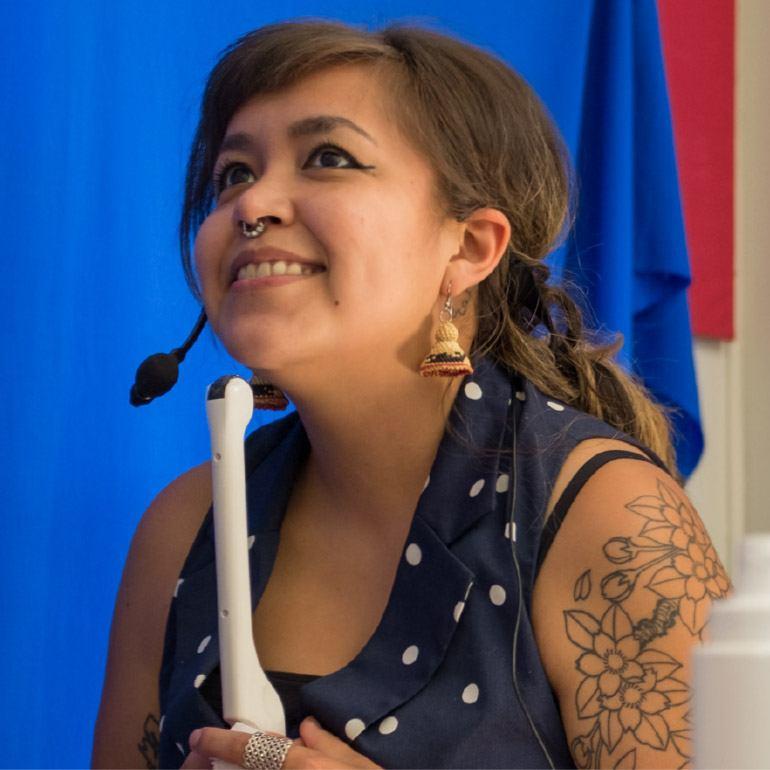Pronunciation tool helps to save endangered languages
The eNunciate program uses ultrasound imaging to help learners visualize how their tongues should move to produce the right sound

If you’ve ever struggled to master the correct pronunciation of a second language, you know that getting the words to sound right can be a challenge. Did I say ‘salute’? I meant ‘luggage’. How does she curl her tongue to make that sound? Why can’t I seem to make that little clicking noise at the back of my throat?
The world of pronunciation can be mystifying for many of us. A team of UBC researchers set out to make it a little less so. They created eNunciate, an innovative program that blends the best of linguistics and language teaching with ultrasound imaging. Using eNunciate, new language learners can actually see how their tongues should move when producing a given sound — and that takes language acquisition to a whole new level.
Historically, pronunciation training has been one of the most challenging aspects of teaching languages. It works well when instruction includes one-on-one interaction, repetition and feedback. However, in larger classes all that specificity in instruction is diminished.
“Did I say ‘salute’? I meant ‘luggage’. How does she curl her tongue to make that sound? Why can’t I seem to make that little clicking noise at the back of my throat?”
Ashley Cooper, W̱SÁNEĆ community

A community unites to preserve their language 
Ashley Cooper, from the W̱SÁNEĆ community
UBC linguistics professor Dr. Bryan Gick, postdoctoral fellow Heather Bliss and their colleagues recognized the gap and set out to bridge it. They knew they needed the expertise of language teachers, so they reached out to create a multidisciplinary team composed of experts in linguistics, language sciences, computer science and Asian studies.
The team layered audio recordings with ultrasound technology to see inside a native language speaker’s head. With the accompanying prosody visualizer — similar in appearance to a graphic equalizer — learners can record their own voices and compare them to that of a model speaker, pairing the visual and aural modalities for maximum learning.
The resulting tool delivered on its promise on improving learners’ pronunciation and proved to be useful for both speech therapists and language teachers. But what no one saw coming was how powerful the program is at reviving languages that are on the verge of extinction.
Take, for example, the W̱SÁNEĆ First Nation of Vancouver Island, who have just a few remaining first-language speakers. With eNunciate and the tongue visualizer as tools, the W̱SÁNEĆ are now able to create accessible programming for children and adults alike to reclaim and reintegrate their language. The Upriver Halq’emeylem peoples of the Lower Mainland also are using the technology, recording and preserving the language as it is spoken by their last native speaker.
The program helps learners get their pronunciations right — a challenge given that many sounds in Indigenous languages come from far back in the vocal tract, which until now has been difficult to visualize and replicate. The eNunciate project is doing even more than that, however. It’s helping Indigenous learners reconnect with their languages in a way that is reflective of a deeper connection with nature and a stronger sense of culture — indeed in a way that represents an entirely different worldview.
The work continues, with the eNunciate team travelling to Indigenous communities throughout western Canada, tongue visualizer and recording kit in hand, ready to teach users how to use the tools to develop their own language libraries — for now, and for generations from now.
Originally published September 2016
Did you know you can learn a new language with the help of eNunciate?
Feel free to republish the text of this article, but please follow our guidelines for attribution and seek any necessary permissions before doing so. Please note that images are not included in this blanket licence.


